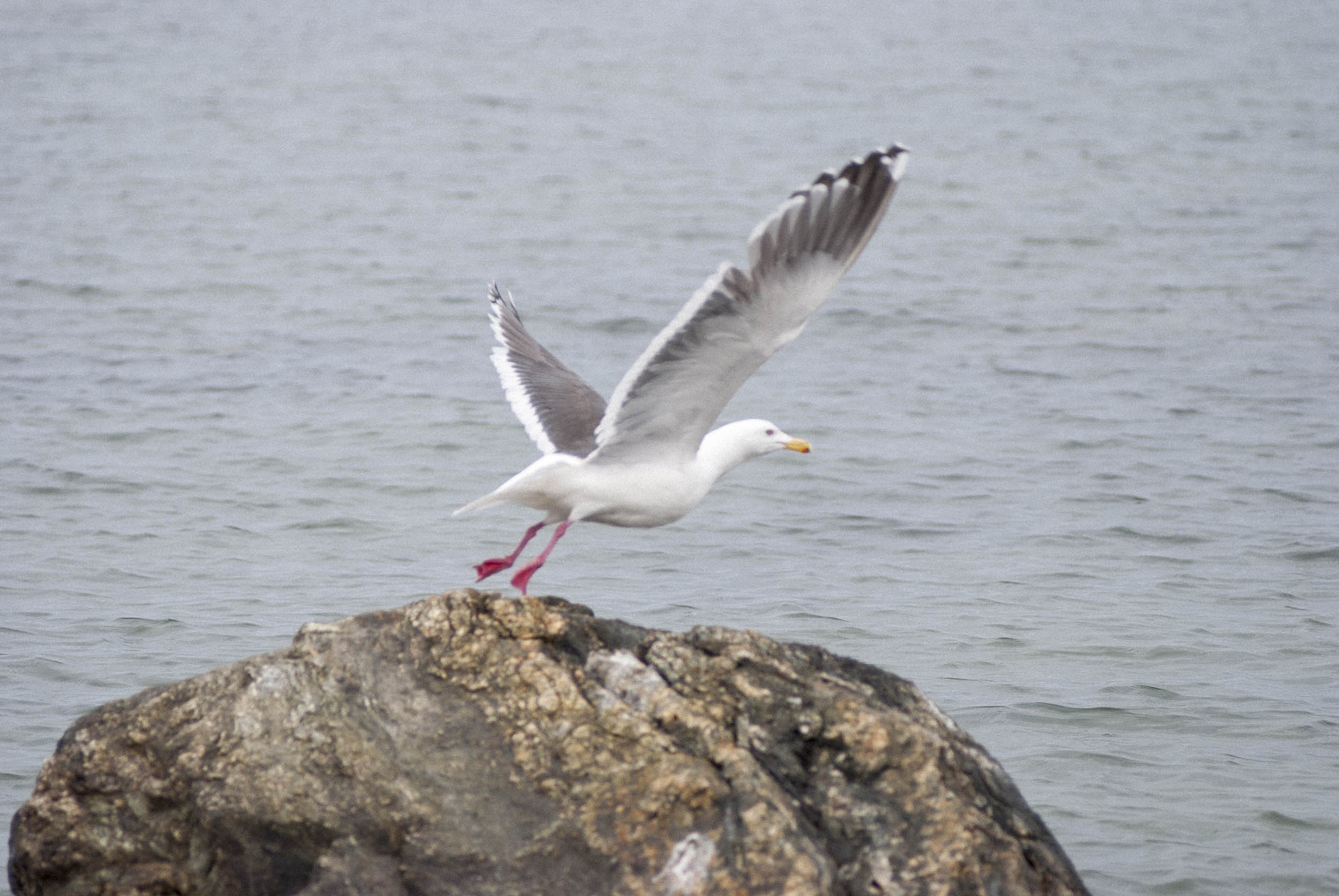Slaty-backed gull on:
[Wikipedia]
[Google]
[Amazon]
The slaty-backed gull (''Larus schistisagus'') is a large, white-headed
MTV3 News website
/ref>
 It is tied with the
It is tied with the
gull
Gulls, or colloquially seagulls, are seabirds of the family Laridae in the suborder Lari. They are most closely related to the terns and skimmers and only distantly related to auks, and even more distantly to waders. Until the 21st century, ...
that breeds on the north-eastern coast of the Palearctic
The Palearctic or Palaearctic is the largest of the eight biogeographic realms of the Earth. It stretches across all of Eurasia north of the foothills of the Himalayas, and North Africa.
The realm consists of several bioregions: the Euro-Si ...
, but travels widely during nonbreeding seasons. It is similar in appearance to the western gull
The western gull (''Larus occidentalis'') is a large white-headed gull that lives on the west coast of North America. It was previously considered conspecific with the yellow-footed gull (''Larus livens'') of the Gulf of California. The western ...
and the glaucous-winged gull
The glaucous-winged gull (''Larus glaucescens'') is a large, white-headed gull. The genus name is from Latin ''Larus'' which appears to have referred to a gull or other large seabird. The specific ''glaucescens'' is New Latin for "glaucous" f ...
. Another alternate name is Pacific gull, though it also applies to a Southern Hemisphere species, '' L. pacificus''.
Distribution and habitat
The Slaty-backed Gull is native to the Pacific coast of northeastern Asia. Individuals have strayed to various places throughout North America, including New England and Texas. On 3 November 2012, an individual was spotted inFinland
Finland ( fi, Suomi ; sv, Finland ), officially the Republic of Finland (; ), is a Nordic country in Northern Europe. It shares land borders with Sweden to the northwest, Norway to the north, and Russia to the east, with the Gulf of Bo ...
. The species has only been spotted three times before in Europe./ref>
Description
 It is tied with the
It is tied with the yellow-footed gull
The yellow-footed gull (''Larus livens'') is a large gull, closely related to the western gull and thought to be a subspecies until the 1960s. It is endemic to the Gulf of California.
Description
Adults are similar in appearance to the wester ...
for fourth-largest gull species, measuring in length, in wingspan, and in weight.''CRC Handbook of Avian Body Masses'' by John B. Dunning Jr. (Editor). CRC Press (1992), .''Gulls: Of North America, Europe, and Asia'' by Klaus Malling Olsen & Hans Larsson. Princeton University Press (2004). . Among standard measurements, the wing chord is , the bill
Bill(s) may refer to:
Common meanings
* Banknote, paper cash (especially in the United States)
* Bill (law), a proposed law put before a legislature
* Invoice, commercial document issued by a seller to a buyer
* Bill, a bird or animal's beak
Plac ...
is , and the tarsus is . It has a white head, belly, and tail with a dark slaty-gray back and wings with a broad white trailing edge. The wings and back are slightly darker than those of the western gull (Kodak grey scale 9.5 to 12 compared to Kodak 9 to 11 of the darker southern subspecies of Western Gull). On the outer primaries (p9 and p10), there are white spots called mirrors. The inner webs to primaries are pale grey, and the mid-primaries have long grey tongues tipped with large white crescents, forming a "string of pearls" pattern connecting to the broad white trailing edge of the secondaries. Its eyes are yellow surrounded by purple to deep pink orbital skin. The legs are pink and short when compared with those of similar-looking gulls, and the body appears more stout with a "pot-bellied" appearance. The bill is yellow with orange-red subterminal spot (the spot near the end of the bill that chicks peck to stimulate regurgitative feeding). Immature gulls' plumage is brown, similar to that of the great black-backed gull
The great black-backed gull (''Larus marinus'') is the largest member of the gull family. Described by the Cornell Lab of Ornithology as "the king of the Atlantic waterfront", it is a very aggressive hunter, pirate, and scavenger. It breeds on ...
, but paler, and is practically indistinguishable from the immature herring gull Herring gull is a common name for several birds in the genus '' Larus'', all formerly treated as a single species.
Three species are still combined in some taxonomies:
* American herring gull (''Larus smithsonianus'') - North America
* European ...
in the field.
Etymology
The genus name is fromLatin
Latin (, or , ) is a classical language belonging to the Italic branch of the Indo-European languages. Latin was originally a dialect spoken in the lower Tiber area (then known as Latium) around present-day Rome, but through the power ...
''larus'', which appears to have referred to a gull or other large seabird. The specific ''schistisagus'' is from New Latin
New Latin (also called Neo-Latin or Modern Latin) is the revival of Literary Latin used in original, scholarly, and scientific works since about 1500. Modern scholarly and technical nomenclature, such as in zoological and botanical taxonomy ...
''schistus'', "slate", and Latin ''sagus'', "cloak".
References
{{Taxonbar, from=Q1272080 slaty-backed gull Native birds of Alaska Birds of North Asia slaty-backed gull